The Roman Forum, also known by its Latin name Forum Romanum (Italian: Foro Romano), is a rectangular forum (plaza) surrounded by the ruins of several important ancient government buildings at the center of the city of Rome. Citizens of the ancient city referred to this space, originally a marketplace, as the Forum Magnum, or simply the Forum. For centuries the Forum was the center of day-to-day life in Rome: the site of triumphal processions and elections; the venue for public speeches, criminal trials, and gladiatorial matches; and the nucleus of commercial affairs. Here statues and monuments commemorated the city's great men. The teeming heart of ancient Rome, it has been called the most celebrated meeting place in the world, and in all history. Located in the small valley between the Palatine and Capitoline Hills, the Forum today is a sprawling ruin of architectural fragments and intermittent archaeological excavations attracting 4.5 million or more sightseers yearly. Many of the oldest and most important structures of the ancient city were located on or near the Forum. The Roman Kingdom's earliest shrines and temples were located on the southeastern edge. These included the ancient former royal residence, the Regia (8th century BC), and the Temple of Vesta (7th century BC), as well as the surrounding complex of the Vestal Virgins, all of which were rebuilt after the rise of imperial Rome. Other archaic shrines to the northwest, such as the Umbilicus Urbis and the Vulcanal (Shrine of Vulcan), developed into the Republic's formal Comitium (assembly area). This is where the Senate—as well as Republican government itself—began. The Senate House, government offices, tribunals, temples, memorials and statues gradually cluttered the area. Over time the archaic Comitium was replaced by the larger adjacent Forum and the focus of judicial activity moved to the new Basilica Aemilia (179 BC). Some 130 years later, Julius Caesar built the Basilica Julia, along with the new Curia Julia, refocusing both the judicial offices and the Senate itself. This new Forum, in what proved to be its final form, then served as a revitalized city square where the people of Rome could gather for commercial, political, judicial and religious pursuits in ever greater numbers. Eventually much economic and judicial business would transfer away from the Forum Romanum to the larger and more extravagant structures (Trajan's Forum and the Basilica Ulpia) to the north. The reign of Constantine the Great saw the construction of the last major expansion of the Forum complex—the Basilica of Maxentius (312 AD). This returned the political center to the Forum until the fall of the Western Roman Empire almost two centuries later.

Roman Forum (Foro Romano) Tours and Tickets
🎧 Available audio guides (5)
The Roman Forum, also known by its Latin name Forum Romanum (Italian: Foro Romano), is a rectangular forum (plaza) surrounded by the ruins of several important ancient government buildings at the center of the city of Rome. Citizens of the ancient city referred to this space, originally a marketplace, as the Forum Magnum, or simply the Forum. For centuries the Forum was the center of day-to-day life in Rome: the site of triumphal processions and elections; the venue for public speeches, criminal trials, and gladiatorial matches; and the nucleus of commercial affairs. Here statues and monuments commemorated the city's great men. The teeming heart of ancient Rome, it has been called the most celebrated meeting place in the world, and in all history. Located in the small valley between the Palatine and Capitoline Hills, the Forum today is a sprawling ruin of architectural fragments and intermittent archaeological excavations attracting 4.5 million or more sightseers yearly. Many of the oldest and most important structures of the ancient city were located on or near the Forum. The Roman Kingdom's earliest shrines and temples were located on the southeastern edge. These included the ancient former royal residence, the Regia (8th century BC), and the Temple of Vesta (7th century BC), as well as the surrounding complex of the Vestal Virgins, all of which were rebuilt after the rise of imperial Rome. Other archaic shrines to the northwest, such as the Umbilicus Urbis and the Vulcanal (Shrine of Vulcan), developed into the Republic's formal Comitium (assembly area). This is where the Senate—as well as Republican government itself—began. The Senate House, government offices, tribunals, temples, memorials and statues gradually cluttered the area. Over time the archaic Comitium was replaced by the larger adjacent Forum and the focus of judicial activity moved to the new Basilica Aemilia (179 BC). Some 130 years later, Julius Caesar built the Basilica Julia, along with the new Curia Julia, refocusing both the judicial offices and the Senate itself. This new Forum, in what proved to be its final form, then served as a revitalized city square where the people of Rome could gather for commercial, political, judicial and religious pursuits in ever greater numbers. Eventually much economic and judicial business would transfer away from the Forum Romanum to the larger and more extravagant structures (Trajan's Forum and the Basilica Ulpia) to the north. The reign of Constantine the Great saw the construction of the last major expansion of the Forum complex—the Basilica of Maxentius (312 AD). This returned the political center to the Forum until the fall of the Western Roman Empire almost two centuries later.
Overview
More Info
- Most tour options include hotel pickup and dropoff.
- Standard admission tickets to the Roman Forum include entry to the Colosseum and Palatine Hill.
- Don’t waste time in line—skip-the-line entry is available for both the Roman Forum and the Colosseum.
- Staying in Florence but want to see Rome? Book a day trip with round-trip transportation by high-speed train, also available from Milan and Naples.
More Adventures for You
0$
0$
3000$
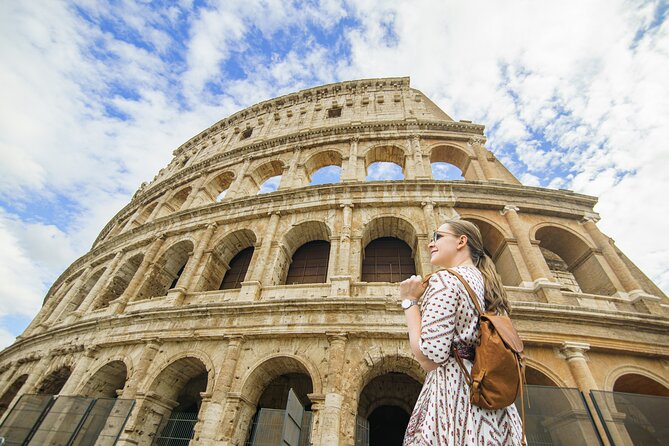
Likely to Sell Out
Price From
$57.73 USD
The ancient glory of Rome is reborn! Skip the Line at three of the most significant surviving remnants of the Eternal City: the Colosseum, Palatine Hill and Roman Forum. Your English-speaking expert historian tour guide will share anecdotes and history throughout the 3-hour tour, rebuilding the impressive ruins with tales of Ancient Rome’s heyday._en-US
Learn More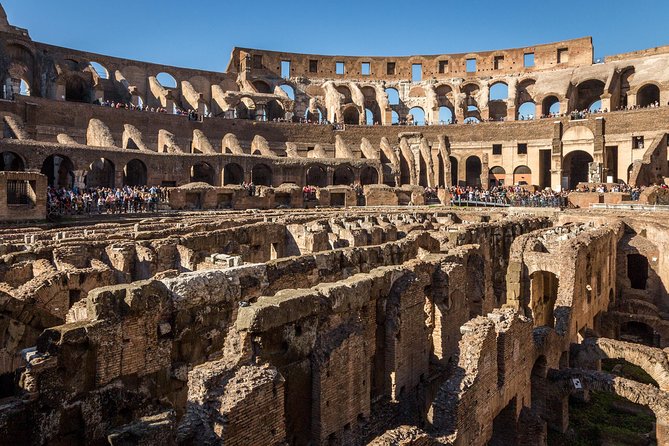
Likely to Sell Out
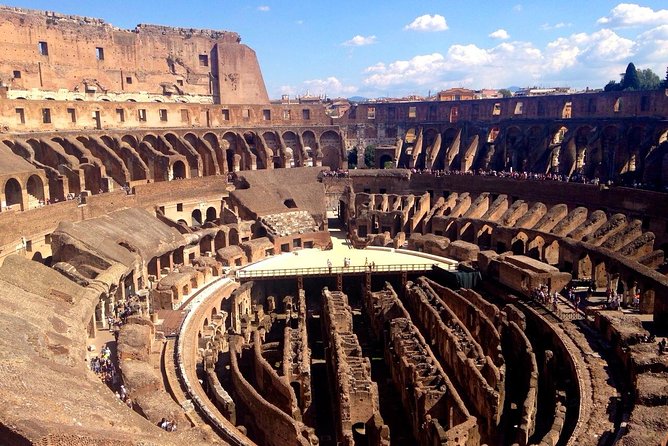
Likely to Sell Out
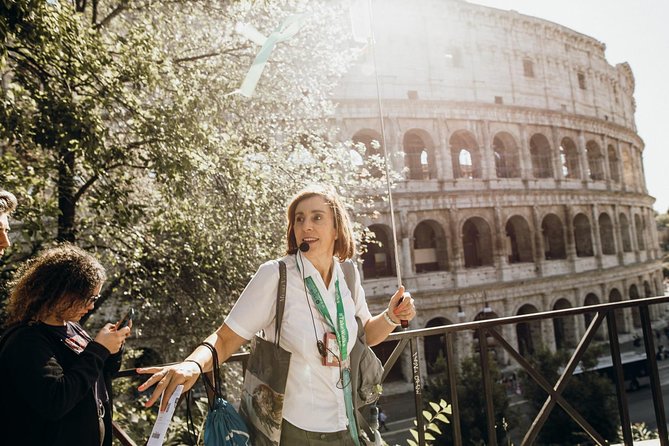
Likely to Sell Out
Price From
$82.15 USD
Get a gladiator’s view of the Colosseum, then explore the Roman Forum on a walking tour through the heart of ancient Rome. With special access ticket, you'll enter the arena via the Gladiator’s Gate, stand where gladiators once fought, hear tales of ruthless crowds and emperors, then explore the Colosseum’s first and second levels with your guide. Finish with a tour of Palatine Hill and the Roman Forum with even more stories that bring the ruins to life. _en-US
Learn More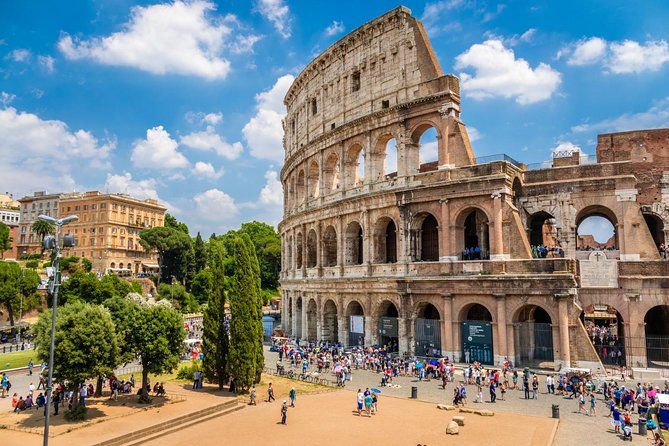
Likely to Sell Out
Price From
$48.29 USD
Walk in the footsteps of gladiators and emperors as your vivacious guide transports you back to the era of ancient Rome. If you choose the special access to the gladiator's gate and Arena floor, you'll feel like you're a part of history as you explore one of the world's most iconic landmarks. Explore the inside of one of the worlds greatest attractions that’s waiting for you here in Rome. Let an expert official guide educate and amaze you with facts and memorable tales of the glorious gladiatorial games you’ll never forget. Don't loose the chance to have the most amazing and unforgetable experience ever! Your guide will be at your complete disposal for any question or curiosity guaranting an interactive visit tailored on your needs! Choose the option which better suits your plans! Our Team will be pleased to welcoming you!_en-US
Learn More

For Individuals with Hearing Loss
- Video Guide
- Hearing kits
- Speech To Text
Access for Seniors
- Distance from drop-off location to entrance: Less than 20 m
- Recommended time for visit 1 hour
- Recommended time for visit 2 hours
- Physical difficulty level - 4
Accessibility for wheels
- Special Parking
- Access with Portable Ramp
- Can have severe slope, cobblestones, and/or gravel
- Bathroom: Too narrow for wheelchair
- Hilly area
- Accessible Toilet
Access for Visually Impaired
- Audio Guide
- Place has Special Guide Service
- Service animals permitted
of the past that bring the history of the Roman Forum to life.
[Sound of footsteps on ancient cobblestones]
As you enter the Roman Forum, you are transported back in time to the bustling heart of ancient Rome. The sun beats down on the weathered ruins, casting long shadows across the remains of grand temples and majestic arches. The air is thick with the scent of crushed herbs and stone dust, mingling with the echoes of centuries past.
You can almost hear the chatter of merchants haggling over goods, the clatter of hooves on the stony streets, and the distant murmur of a crowd gathered for a public speech. Close your eyes and let the history of this place wash over you like a tidal wave, carrying you along on its emotional journey of triumph and tragedy.
As you walk among the ruins, your fingers brush against the rough-hewn stones, feeling the centuries of wear and tear etched into their surface. You can imagine the hands that carved these stones, the sweat and toil of generations long gone, all in the name of building a city that would stand the test of time.
Stop for a moment at the Temple of Vesta, where the sacred flame of Rome once burned bright. Feel the reverence and awe that must have filled the hearts of the ancient priests as they tended to the eternal fire, a symbol of the city’s endurance and resilience.
Now, make your way to the Arch of Titus, marveling at its intricate carvings and towering presence. Imagine the victorious procession that passed beneath its arch, the spoils of war on display for all to see, a reminder of Rome’s military might and dominance.
As you stand in the shadow of the imposing Colosseum, let yourself be transported to a time when the roar of the crowds and the clash of gladiators echoed through the arena. Feel the excitement and thrill of the games, tinged with a hint of unease at the brutality and spectacle of it all.
Finally, gaze out over the sprawling expanse of the Forum, the beating heart of ancient Rome. The ruins may be fragmented and weathered, but they still hold the power to stir the soul and ignite the imagination. Take a deep breath and soak in the history that surrounds you, a tapestry of triumph and tragedy woven into the very fabric of the city.
As you reluctantly bid farewell to this timeless place, carry with you the echoes of the past, the whispers of emperors and senators, soldiers and slaves. Let the emotional journey of your visit linger in your heart, a reminder of the enduring power of Rome and the indelible mark it has left on the world.
The Roman Forum in Rome does not offer audio descriptive guides or sensory-friendly hours. Access for visitors with disabilities may be limited due to the ancient ruins and uneven terrain. It is recommended to contact the site in advance to inquire about specific accessibility accommodations that may be available.
The Roman Forum, or Foro Romano, is truly a treasure in the heart of Rome. As a local writer and artist, I can attest to the magical atmosphere that envelops you as soon as you step foot into this ancient archaeological site.
One of the first things that strikes you is the sheer scale of the ruins. Walking among the remains of once grand temples, basilicas, and government buildings, it’s hard not to feel a sense of awe at the history that surrounds you. As a writer, I find the Forum to be an endless source of inspiration. The stories of emperors, gladiators, and everyday Romans seem to come alive as you wander through the crumbling marble and stone.
As an artist, I am constantly amazed by the beauty of the architecture and the intricate details that can still be seen in some of the ruins. The way the light filters through the columns and hits the ancient walls creates a sense of timelessness that is hard to put into words, but can be captured through a brushstroke or a sketch.
But perhaps what I love most about the Roman Forum is its ability to transport you back in time. In a city as bustling and modern as Rome, it’s easy to get caught up in the present. But when you’re standing among the ruins of the Forum, you can’t help but feel connected to the past in a very real way. It’s a reminder of the generations of people who have walked these same paths before you, and of the enduring power of Rome as a city and a civilization.
So if you find yourself in Rome, don’t miss the opportunity to visit the Roman Forum. Whether you’re a writer, artist, history buff, or simply a curious traveler, this ancient site has something to offer everyone. The stories and experiences that await you among the ruins are truly priceless, and will stay with you long after you’ve left the Forum behind.
### Roman Forum (Foro Romano), Rome: Directions and Transportation
#### Directions:
- Address: Via della Salara Vecchia, 5/6, 00186 Roma RM, Italy
- The Roman Forum is located near the Colosseum in the heart of Rome, making it easily accessible by various modes of transportation.
#### Getting There:
1. By Metro: The closest metro station to the Roman Forum is Colosseo, which is served by Line B (Blue Line). From the metro station, it’s a short walk to the entrance of the Roman Forum.
2. By Bus: Several bus lines stop near the Roman Forum, including bus lines 75, 81, 85, 87, 117, 186, and 810.
3. By Tram: Tram Line 3 also stops near the Roman Forum, providing another convenient option for reaching the site.
4. On Foot: If you’re in the historic center of Rome, you can easily reach the Roman Forum on foot. It’s a short walk from attractions like the Colosseum and Piazza Venezia.
#### Accessibility:
- The Roman Forum has some accessibility challenges due to its historic nature and uneven terrain. Wheelchair access is limited in certain areas, but there are accessible pathways and ramps in some sections.
- If you require special assistance, it’s recommended to contact the site in advance to inquire about available accommodations.
### Roman Forum (Foro Romano), Rome: Ticket Booking and Discounts
#### Ticket Booking:
- Online: Tickets for the Roman Forum can be purchased online through the official website or other authorized ticket vendors. This option allows you to skip the ticket lines at the entrance and secure your admission in advance.
- Onsite: Tickets can also be purchased at the ticket office at the entrance to the Roman Forum. However, there may be lines, especially during peak tourist seasons.
#### Discounts:
- EU Citizens under 18/over 65: EU citizens under 18 and over 65 may be eligible for discounted or free admission to the Roman Forum. Make sure to bring valid identification to avail of these discounts.
- Combination Tickets: Consider purchasing a combination ticket that includes entry to multiple attractions in Rome, such as the Colosseum, Palatine Hill, and the Roman Forum. This can often be a cost-effective option for visiting multiple sites.
### Roman Forum (Foro Romano), Rome: Local Amenities
#### Parking:
- Limited parking is available near the Roman Forum, but it’s recommended to use public transportation due to traffic congestion in the area. There are paid parking lots/garages nearby for those who choose to drive.
#### Restrooms:
- Restroom facilities are available within the Roman Forum complex. It’s advisable to use the facilities before starting your visit, as the site is vast, and restrooms may not be easily accessible in all areas.
#### Dining Options:
- There are no dining options within the Roman Forum itself, but there are cafes, restaurants, and gelaterias in the surrounding area where you can enjoy a meal or snacks before or after your visit.
- If you have dietary restrictions or preferences, look for restaurants that cater to your needs in the nearby neighborhoods of Monti or Celio.




